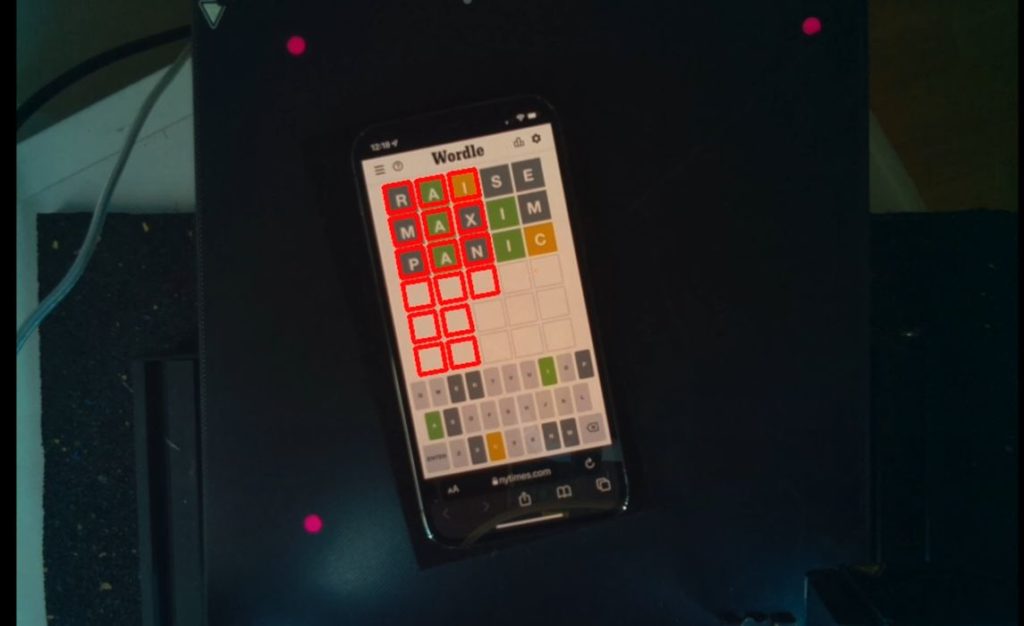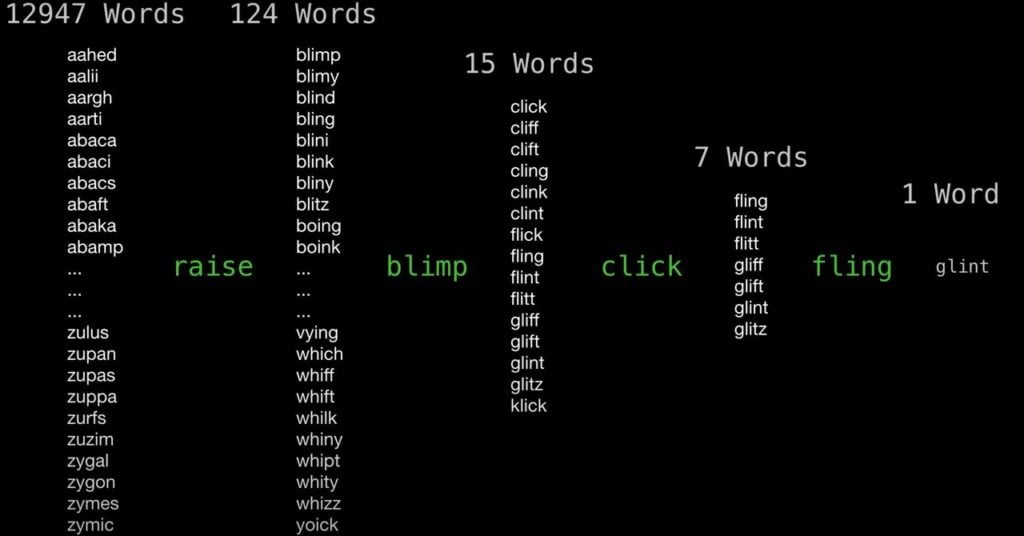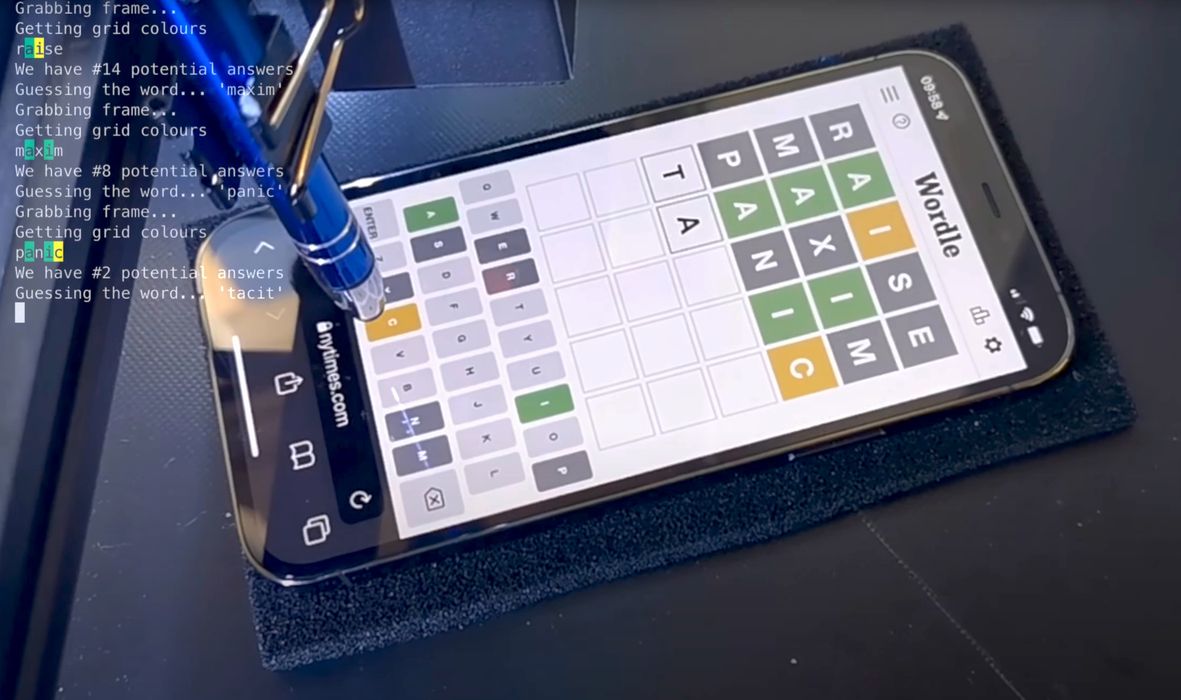
YouTuber Atomic14 somehow converted a Creality 3D printer to a Wordle-solving robot.
Wordle, if you somehow haven’t noticed, conquered the social media world a few months ago with its addictive daily word guessing game. It involves iteratively guessing the letters of a hidden word, but reveals which letters are correct on each guess. The results of each game are easily posted on all social media, which attracted many more to the game. Recently, the game was purchased by the New York Times.
However, while Wordle is addictive, it can also be quite difficult. Vocabularly-challenged players can be particularly frustrated.
But there is a solution, and it involves 3D printing.
Atomic14 for some reason decided to make a Wordle-solving robot that could solve the daily puzzle on a smartphone. The YouTuber has previously built a Sudoku solver that used imaging, so a Wordle solver was obviously the next step.
As a base mechanism he chose a standard Creality desktop 3D printer, which provides the majority of the physical mechanisms required to make the robot. This device seems to be modified only slightly, having a pen on the printhead to press buttons, a downward looking camera to image the mobile app and some custom GCODE.
This is quite a challenging project, as it involved not only physical movement coordination, but also image interpretation and information processing.
One key problem was simply locating the mobile phone when placed on the print bed. Atomic14’s video shows how this was accomplished using imaging techniques.
It’s fascinating to see how these challenges were gradually overcome by Atomic14. The system recognizes a randomly placed mobile device running Wordle, and is then able to press buttons and recognize the output of the app.

After the mechanical and optical elements were completed, the biggest problem remains: how to actually solve the puzzle? It turns out there are dozens of different approaches possible, and some have even performed extensive mathematical and simulated analyses to identify optimal methods.
Atomic14’s approach involves starting with a 33,000 word database and then use the guess feedback to gradually narrow down the possibilities for the next guess. The guess selected is the one predicted to have the fewest follow up guesses.

If you were to build this system, you’d literally be able to toss your phone on the print plate and press a button to solve the puzzle. Incredible.
The moral of the story here is that 3D printers are very useful devices, and can, if appropriately modified, also solve a puzzle for you.
That is, if you are too lazy to do it yourself. And you’ll need another 3D printer if you want to print.
Via YouTube

